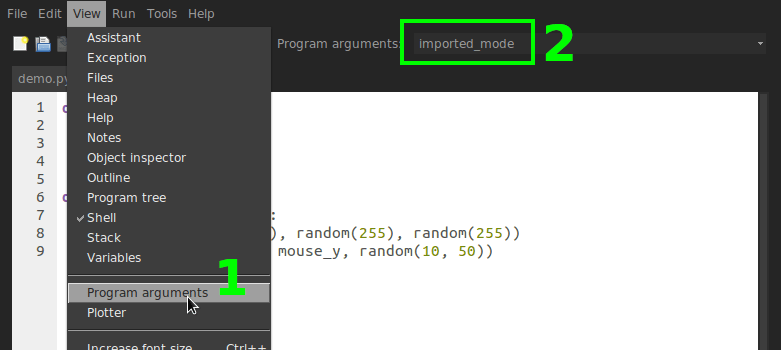

- Thonny run without saving install#
- Thonny run without saving code#
- Thonny run without saving series#
Because of this, all you have to do is install it and go! Advertisements The beauty of the Thonny installer is that they’ve combined the Integrated Development Environment (or IDE) and the Python program and runtime libraries on which it depends into a single installer. In addition, the Thonny debugger goes beyond the step-into function of most debuggers to show beginners in detail how each expression in Python is interpreted. This is because it has a simple, one step installation that provides both the Python interpreter and runtime and an IDE configured to use it.

In general, Thonny is the best Python IDE for beginners. It just came on one floppy that came with the book. When I work with the Thonny IDE for Python, Thonny reminds me of the simplicity of that first C compiler, which came not on twenty-two 3.5″ floppies like the one I purchased a couple of years later (sheesh!).

Thonny run without saving code#
I tend to pick my favorite tool based on the task at hand: P圜harm for professional work that may involve other languages, Jupyter Lab for exercise for this blog, and VS Code for quick scripts and terminal work.
Thonny run without saving series#
This was meant as a simplified ‘getting started’ tutorial with the Pico, and the first of a series dedicated to working with the Raspberry Pi Pico microcontroller.As a Python developer and blogger, I have worked with and reviewed many different Python development tools. The basics of getting started with MicroPython and the Pico microcontroller were first introduced, followed by some simple hardware tests with general purpose inputs and outputs (GPIOs) and an RGB LED.

In this tutorial, the Raspberry Pi Pico was explored using Thonny, a Python IDE already installed on the general distribution of the Raspberry Pi operating system (Raspberry Pi OS). Using only a Raspberry Pi 4, the Pico microcontroller can be programmed to run MicroPython and harness its numerous peripherals: I2C, SPI, UART, PWM, analog-to-digital conversion, etc. It is a direct rival in some respects to competitive open-source and ‘maker’ electronics companies like Arduino, Espressif, PIC, Teensy, and others. The Raspberry Pi Pico was introduced as a new MicroPython-enabled microcontroller produced by the Raspberry Pi Foundation. An RGB LED will be used to demonstrate general purpose input/output of the Pico microcontroller. From start to finish - this tutorial helps users run their first custom MicroPython script on the Pico in just a few minutes. A Raspberry Pi 4 computer is ideal for interfacing with the Pico, which can be used to prepare, debug, and program the Pico. The focus on MicroPython, as opposed to C/C++, minimizes the confusion and time required to get started with the Pico. One particular draw of the Pico is its compatibility with MicroPython, which is chosen as the programming tool for this project. One of the innovations of the Pico is the dual-core processor, which permits multiprocessing at clock rates up to 133 MHz. The board is just 21mm x 51mm in size, making it ideal for applications that require low-profile designs. The Pico shares many of the capabilities of common Arduino boards including: analog-to-digital conversion (12-bit ADC), UART, SPI, I2C, PWM, among others. The Raspberry Pi Pico was recently released by the Raspberry Pi Foundation as a competitive microcontroller in the open-source electronics sphere.


 0 kommentar(er)
0 kommentar(er)
